The media are all about small Unmanned Aerial Vehicles (sUAV) these days, perhaps better known as “drones.” Drones add significant value to our lives and will become more important as we move forward into the future. However, with all technologies come great responsibilities. One of those responsibilities is how we operate our personal UAV/drones.
Last week in Clarendon, Texas, a newbie drone owner/operator decided to check out an antelope. The “pilot” is a self-admitted newbie, claiming he only has “20 or so flights” on his newly acquired device and perhaps that’s the reason for his short-sighted approach in flying his device close to a wild animal.
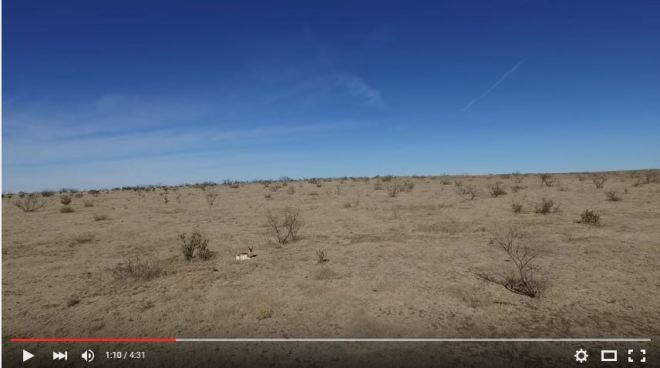
There certainly is nothing wrong with wanting to capture the antelope in a natural setting. In fact, some would be a little jealous of such terrific subjects to film. Where this endeavor went wrong is when the drone owner decided to try to film the animal at eye-level and up close.
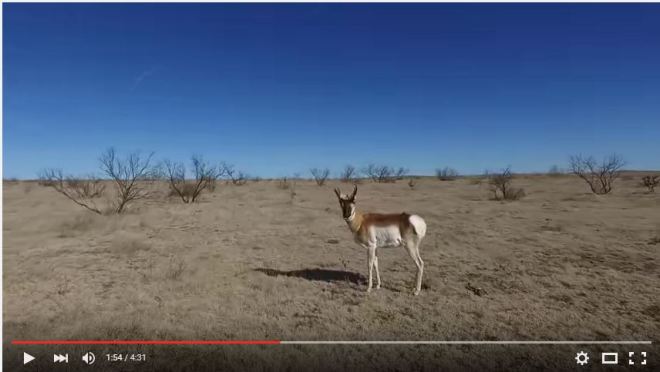
The antelope makes an attempt to run away and the drone operator chose to chase the animal at high speed. The antelope turns and wants to check out the drone. Due to the erratic flight of the drone/poor piloting, the antelope perceives a threat and attacked the drone before running off.
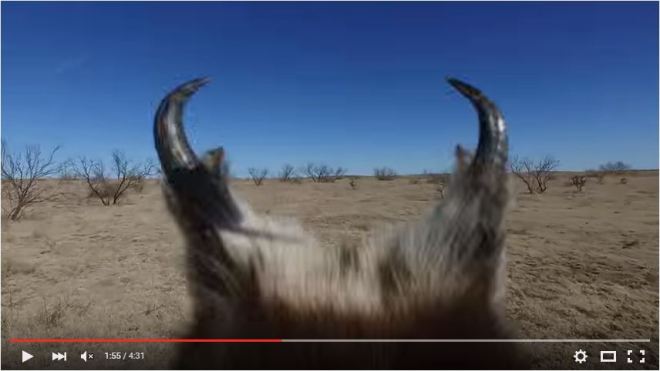
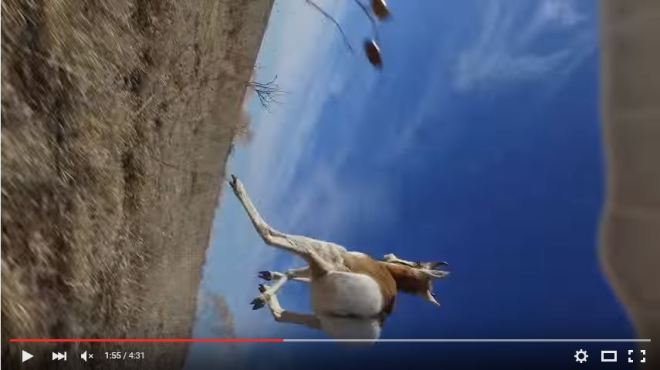
The drone doesn’t suffer much damage, but what about the antelope?
Veterinarians all over the world have made comment about the dangers propellers bring to dogs-noses. There have been a few cases of eye-loss, at least three of them infants who have been injured by propellers. In this article, several prop injuries can be seen.
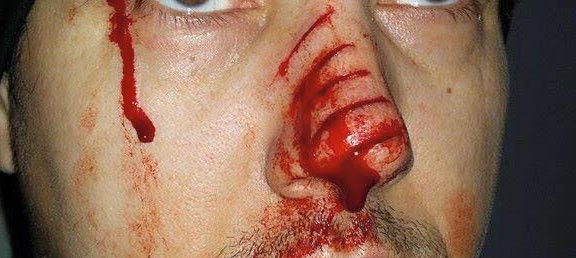
It’s not as though these flying Cuisinarts are entirely face-friendly. The face shown here was cut with the same model drone as used in the antelope video. With this in mind, I approached the owner of the drone. He felt strongly that an animal’s face is tough enough to handle this sort of incident and that it couldn’t possibly harm the animal in any way.

Regardless of the drone operator’s opinion, it stands to reason that even small drones like the popular white DJI Phantom can do damage to eyes and other soft tissues whether human or beast, as evidenced by hundreds of photographs around the web.
“The particular drone I was using wouldn’t break the skin on my hand…” Travis Higgins, drone pilot

This little guy has permanently lost his eye to a DJI Phantom propeller, the same model drone seen in this antelope video.

I can’t particularly fault the drone owner for being defensive; he truly doesn’t know what he doesn’t know, but hopefully the many posts on his YouTube account have informed him that he made a mistake and it won’t be repeated. YouTube certainly provides some good learning opportunities. There are many websites, pages, and community groups where new drone operators can gain knowledge and awareness of how to best manage their drone use.
But what about other drone owners? Do they “get it?”
If recent news articles ranging from flying a drone into the side of the Empire State Building, to a drone owner attempting to get close to presidential candidate Hillary Clinton (just before he crashed it into a building as well), it would seem many drone owners aren’t understanding the impact and risk that the excitement of drones bring to the community. In this particular case, the operator continually referred to himself as a “licensed pilot who knows the FAA rules.” There are no FAA rules that apply here; common sense should prevail. Yet he’s convinced that “since he’s an FAA-licensed pilot, what he’s doing is OK.”
What might have the drone operator done to not endanger the antelope while still getting great footage?
-
Learn to fly more gracefully/skillfully before putting the drone into the personal space of people or animals. The FAA recommendations are that drones are never closer than 100′ to “non-involved individuals.”
-
Never fly at an altitude or distance that is in close proximity of living beings. In this case, 10′ up would have sufficed; the image could have been post-processed in editing to crop/zoom in on the subject). Again, a topic related to learning more about the device, its camera system, and the technology.
-
Be respectful of the animal. If it runs off it likely is scared and it’s possible the drone could induce the animal to self-injury. Keep your distance. Every year, Yellowstone Park has a percentage of visitors injured or killed because they can’t recognize this rule. They, like the drone pilot in this video, think the animals are like pets and can be gotten close to.
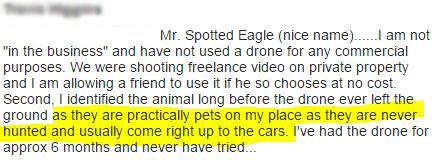
A final comment; the owner of this drone and video claimed his flight was not commercial as he wasn’t being paid to shoot it, but does claim the video is intended for a wildlife conservation video. Money does not need to exchange hands to be considered “commercial” by the FAA. Indeed, if this video is anything more than a couple of buddies having some fun and capturing some hobby footage, it becomes “commercial.” Given that this particular video has received attention from CBS and ABC requesting use for remuneration, and that it’s receiving coins from YouTube for play, it falls into the category of “commercial.” Any commercial video requires a 333 exemption from the FAA, and without it, it is subject to very expensive fines. Be very aware of this, as the FAA and Transport Canada are watching YouTube and social media sites, and several individuals have been charged with using drones for commercial use, although that may not have been the drone operator’s original intent.
Drone owners are very concerned about potential rules, regulations, and controls placed by the government on our technology. Unfortunately, these sorts of videos cause enough uproar that the government truly has little choice but to try to protect us from ourselves.
Be responsible. Fly within the recommendations of the FAA or your local authorities. Understand that not everyone wants to be part of your drone video. Be considerate, be safe.





